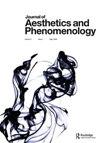Images of Life: Merging into Landscape
IF 0.2
0 PHILOSOPHY
引用次数: 0
Abstract
ABSTRACT The article deals with Chinese ink painting and some aesthetic notions, in particular those of xiang 象 (literally, “image/phenomenon”) and shanshui 山水 (literally: “mountains-waters”, i.e. landscape). Any dichotomy or tension arising from the opposition of the physical and the intelligible world, the domain of appearance and that of essence is avoided, so a new understanding of the role and meaning of the art of painting can be developed. Focusing on Shitao’s Treatise on Painting (early 18th century), as a clear example and apex of the Chinese rumination on painting and calligraphy in early modernity, the implications and the relationship between landscape, art, and the ethical dimension of human experience are investigated and analyzed.生活的影像:融入景观
摘要:本文论述了中国水墨画和一些审美观念,特别是“象”和“山水”的审美观念。避免了物质世界和可理解世界、表象领域和本质领域的对立所产生的任何二分法或张力,从而可以发展对绘画艺术的作用和意义的新理解。本文以18世纪初石涛的《画论》(Treatise on Painting)为研究对象,考察和分析了风景、艺术和人类经验的伦理维度之间的关系。石涛的《画论》是中国近代早期对书画反思的一个明显范例和顶点。
本文章由计算机程序翻译,如有差异,请以英文原文为准。
求助全文
约1分钟内获得全文
求助全文

 求助内容:
求助内容: 应助结果提醒方式:
应助结果提醒方式:


